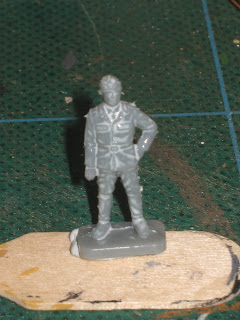I’ve
been using clear bases the last couple of years, as you have seen, and I’m
really satisfied with that.
 |
| A female pulp adventurer on a home-made clear base |
I
found a YouTube video on how to make your own
clear bases from Pulp
Alley the other day. I seem to have missed it when it first aired, about
half a year ago, but checked it out now.
It’s
all about a very simple and cheap way to make your own clear bases, and I
decided to try it out.
First
you have to buy a punch stamp, and the video recommended EK Tools. I found a
Medium Punch (1”) locally in a e-shop selling scrapbook-stuff and had it delivered
just two days after purchase.
Then
you collect all those blister-packs that you kept, as they could, someday, be
useful for windows/water/whatnot. Now they will actually be used!
Use
a scissor to cut out all biggish flat surfaces.
Start
punching! I found some of the thicker blisters to crack when I punched out my
bases, but it all works well enough, and I’m pumping out cheap (as in free)
bases. What’s not to like?
Finally
- ask your friends to keep their blister packs! One of mine had to do some
trash-diving to collect what he had just thrown away (well, he actually rummaged
around in a bag of plastic bound for recycling).
When
I scrapped a lot of material from courses I took ages ago I found a sheet of
clear plastic used as a cover for an old spiral bound collection of papers. The
paper and metal tread is in their respective recycling bins, while the plastic
is refined into clear bases.









